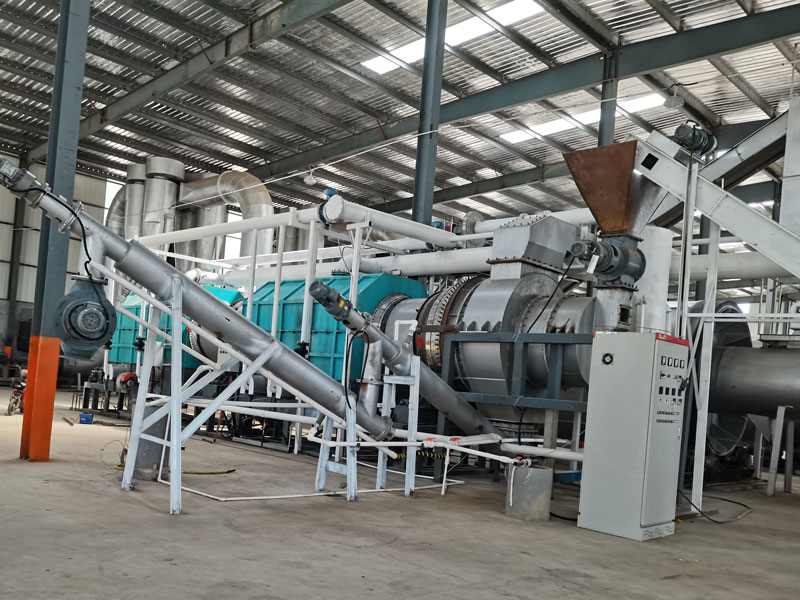In the realm of sustainable energy, biomass pyrolysis has emerged as a pivotal player, unlocking a multitude of possibilities for renewable energy enthusiasts and environmentalists alike. This innovative process involves the thermal decomposition of organic materials, typically plant and agricultural residues, in the absence of oxygen. The result? A triumphant synthesis of bioenergy, biochar, and bio-oil.
The Intricacies of Biomass Pyrolysis
At the heart of this burgeoning technology lies the biomass pyrolysis plant, a sophisticated apparatus designed to facilitate controlled pyrolytic reactions. These plants employ a variety of feedstocks, ranging from forestry residues to dedicated energy crops, demonstrating the versatility of this sustainable energy solution. The absence of oxygen during the pyrolysis process prevents complete combustion, steering the reaction toward the production of valuable by-products.
Biochar: A Carbon-Rich Residue
One of the primary by-products of biomass pyrolysis is biochar—a carbon-rich residue renowned for its soil enhancement properties. This charred biomass not only sequesters carbon effectively but also serves as a potent soil amendment. As it interacts with the soil microbiome, biochar enhances nutrient retention and fosters improved water holding capacity, contributing to sustainable agricultural practices.
Bio-oil: Liquid Gold of Pyrolysis
Bio-oil, another significant output of biomass pyrolysis, bears the promise of renewable liquid fuel. This viscous substance, akin to conventional crude oil, can undergo further refinement to yield transportation fuels or serve as a precursor for bio-based chemicals. The versatility of bio-oil positions it as a key player in the transition towards a greener and more sustainable energy landscape.

Applications on the Horizon
Renewable Energy Generation
The integration of biomass pyrolysis into energy generation processes has gained traction due to its capability to produce a variety of biofuels. The biomass pyrolysis plant (also called biomass carbonization machine) becomes an instrumental player in harnessing the potential of agricultural residues, forest waste, and dedicated energy crops to generate renewable energy. The produced biofuels can be seamlessly integrated into existing energy infrastructure, contributing to the reduction of greenhouse gas emissions.
Carbon Sequestration and Soil Enrichment
Beyond energy generation, the application of biochar as a carbon sequestration tool is gaining recognition. By burying biochar in soil, carbon is effectively sequestered for extended periods, mitigating the impact of anthropogenic carbon dioxide emissions. Simultaneously, the soil enrichment properties of biochar enhance agricultural productivity, presenting a dual-purpose solution for sustainable land management.
Industrial Processes and Bio-based Chemicals
As industries navigate towards eco-friendly alternatives, bio-oil from biomass pyrolysis emerges as a viable feedstock for the production of bio-based chemicals. The diverse chemical composition of bio-oil allows for the synthesis of a spectrum of high-value compounds, reducing dependence on traditional fossil fuel-derived feedstocks. This not only aligns with the principles of the circular economy but also contributes to a more sustainable and resilient industrial sector.

Challenges and Future Prospects
While the prospects of biomass pyrolysis are undeniably promising, challenges persist on the path to widespread adoption. Technological advancements and scale-up efforts are imperative to optimize efficiency and reduce operational costs associated with biochar production equipment. Additionally, addressing concerns related to feedstock availability and logistics remains crucial for ensuring the long-term viability of this technology.
As the world seeks innovative solutions to combat climate change and transition towards a more sustainable future, the role of biomass pyrolysis cannot be overstated. Its ability to convert organic waste into valuable bioenergy and beneficial by-products positions it as a frontier technology with the potential to reshape the bioenergy landscape. The journey from biomass to biochar and bio-oil exemplifies the intricate dance of science and sustainability, marking a significant stride towards a greener tomorrow. Explore our website, Beston Group, for additional insights and information.